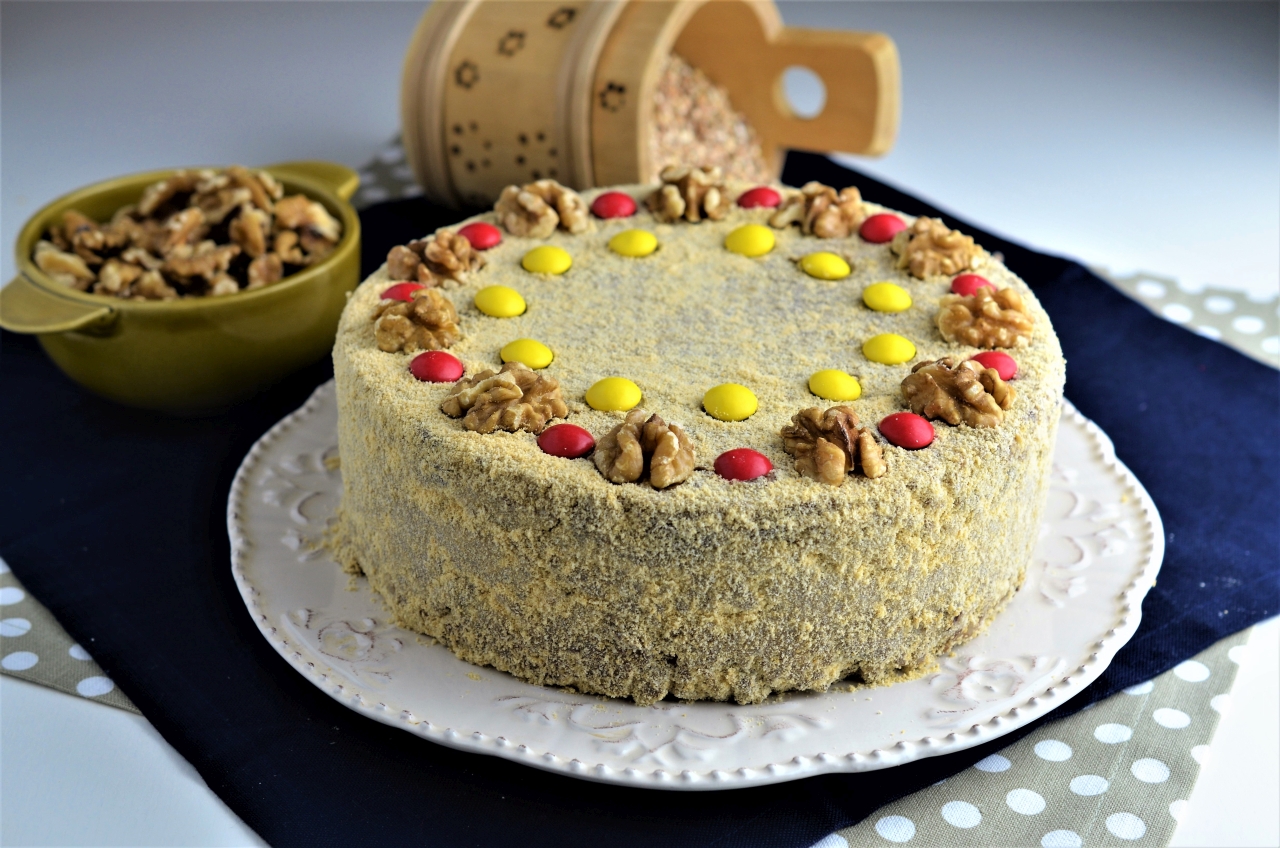COLIVA

Coliva is a traditional Romanian dish that is typically prepared for memorial services and funerals. It is made with rough-grounded wheat or barley and is often decorated with various sweet toppings like coconut flakes and dried fruits. Coliva has a rich history and is more than just a ceremonial dish - it is a symbol of remembrance, respect, and honoring the deceased.
Ingredients:
- 500g rough-grounded wheat or barley
- 200g sugar
- 100g walnuts, chopped
- 100g raisins
- 50g almonds, chopped
- 50g dried fruits (such as dates or figs), chopped
- 50g coconut flakes
- 1 teaspoon vanilla extract
- 1 teaspoon grated lemon zest
- 1 tablespoon rum
- Water
Instructions:
- Start by washing the rough-grounded wheat or barley several times until the water runs clear. Then, soak it in water overnight.
- The next day, drain the soaked wheat or barley and place it in a large pot. Add enough water to cover the grains and bring to a boil. Cook for about 2 hours until the grains are soft and fully cooked. Drain any excess water and let it cool.
- In a separate bowl, combine the sugar, walnuts, raisins, almonds, dried fruits, coconut flakes, vanilla extract, grated lemon zest, and rum. Mix well until all the ingredients are evenly combined.
- Add the cooked wheat or barley to the mixture and gently mix until everything is well incorporated.
How to Prepare:
Coliva is traditionally served in a round shape, symbolizing the circle of life. To shape the coliva, you can use a round baking dish or mold. Grease the mold with a little oil or butter to prevent sticking.
Pour the mixture into the mold and press it down firmly to create a compact shape. Smooth the top with a spatula or the back of a spoon.
Decoration is an important part of preparing coliva. You can be creative with the toppings, using various dried fruits, coconut flakes, or even chocolate shavings. Arrange the toppings on top of the coliva in an aesthetically pleasing pattern.
Let the coliva cool in the mold for at least a couple of hours or overnight in the refrigerator. This will help it set and hold its shape.
Preparation Time:
Preparation time for coliva may vary depending on the amount and type of grains used. The soaking process takes overnight, and the cooking time can range from 2 to 3 hours. The shaping and decoration of the coliva can take an additional 30 minutes to an hour.
Servings:
The recipe provided makes approximately 8-10 servings, depending on the size of the mold used and the desired portion sizes.
Nutrition Facts:
The specific nutritional information for coliva may vary depending on the exact ingredients used and the serving size. As a rough estimate, one serving of coliva (100g) typically contains:
- Calories: 250
- Protein: 4g
- Carbohydrates: 50g
- Fat: 6g
- Fiber: 4g
Tips:
- Make sure to thoroughly wash the rough-grounded wheat or barley to remove any impurities.
- Feel free to customize the toppings and decorations to your preferences. You can also add a touch of cinnamon or cocoa powder for extra flavor.
- If you prefer a sweeter coliva, you can adjust the sugar quantity to your liking.
- Coliva can be made a day in advance and stored in the refrigerator until ready to serve. Just make sure to cover it to prevent drying out.
FAQs:
Q: Can Coliva be made with different grains?
A: Yes, while traditionally made with rough-grounded wheat or barley, you can also use other grains like rice or quinoa to make coliva.
Q: Can I use fresh fruits instead of dried fruits for the topping?
A: Absolutely! Fresh fruits like berries or thinly sliced apples can add a refreshing twist to the topping.
Q: Is Coliva gluten-free?
A: No, since it is traditionally made with wheat or barley, coliva is not gluten-free. However, you can explore gluten-free alternatives like using rice or quinoa instead.
Q: How long does Coliva last?
A: Coliva can be stored in the refrigerator for up to 3-4 days. Just make sure to keep it covered or sealed in an airtight container to maintain freshness.
Q: Can Coliva be frozen?
A: Yes, you can freeze coliva for longer storage. Make sure to wrap it tightly in plastic wrap or store it in a freezer-safe container. Thaw it in the refrigerator before serving.
Coliva is not just a dish; it’s a meaningful tradition that brings comfort and unity during times of sadness. Whether you’re making it for a memorial service or simply want to honor the loved ones who have passed, coliva is a reminder of the importance of remembering and celebrating life.




